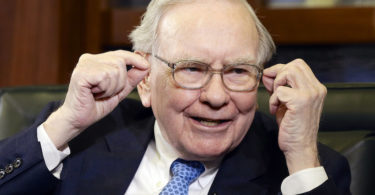Company Overview
AlphaTON Capital Corp. (Nasdaq: ATON) is a newly rebranded digital asset treasury company focused on The Open Network (TON) blockchain ecosystem. Formerly known as Portage Biotech Inc., the firm pivoted in late 2025 from biotechnology to crypto, changing its name and ticker (from PRTG to ATON effective Sept 4, 2025) ([1]). Today, ATON’s core strategy is to accumulate and manage a strategic reserve of TON tokens (often called Toncoin), the native cryptocurrency of the TON blockchain, which is closely integrated with the Telegram messaging platform ([1]) ([1]). ATON provides public market investors exposure to this ecosystem by holding TON tokens, operating TON network validators, and investing in TON-based decentralized applications, all within the governance standards of a Nasdaq-listed company ([2]). The company still retains a legacy portfolio of immunotherapy R&D assets from its biotech past, but it has limited capital allocated (~$4 million) to that segment and is exploring strategic options to monetize or partner those biotech assets ([1]) ([1]). In practice, ATON is positioning itself as a “crypto holding company” for the TON network – akin to how MicroStrategy holds Bitcoin – aiming to benefit from TON adoption via token appreciation, staking yields, and ecosystem growth.
Recent Developments: ATON grabbed headlines by aggressively expanding its TON treasury. In early October 2025, management disclosed the purchase of an additional 300,000 TON tokens, on top of 1.1 million TON acquired the week prior ([2]). This brought ATON’s holdings to roughly 1.4 million TON tokens within days, demonstrating its commitment to rapidly build a dominant TON stake. The company noted that even amid volatile markets, “the majority of its TON assets [are] unencumbered” (i.e. not pledged as collateral) and it has had “zero liquidations” of its crypto positions ([2]). ATON’s Chief Investment Officer, Enzo Villani, emphasized that prudent risk management and conservative leverage are core to their strategy – a theme reflected in ATON’s current debt-to-equity ratio of just 0.07 (7%) ([2]). ATON’s Chief Executive, Brittany Kaiser, has described the firm’s mission as building “a great ecosystem with ‘ATON’ of momentum” – word-playing on “a ton” – uniting technology, transparency, and real-world impact via TON ([2]). To that end, ATON has already forged high-profile partnerships: for example, Animoca Brands (a leading blockchain gaming investor) recently partnered with ATON on equity and token investments, with ATON planning to acquire a TON-based gaming platform ([3]). Separately, ATON signed an LOI with Health In Tech to develop a blockchain-powered insurance claims platform on TON ([3]). These moves signal that beyond just stockpiling tokens, ATON is actively investing in TON’s ecosystem infrastructure and applications, seeking long-term growth drivers.
Dividend Policy and Yield
ATON does not pay a dividend, and has no history of doing so. As Portage Biotech, the company paid no cash dividends (its dividend yield was consistently 0% in recent years) ([4]). This policy remains unchanged post-pivot – management is reinvesting all capital into TON acquisitions and development rather than returning cash to shareholders. Given ATON’s focus on capital appreciation and expansion of its TON treasury, a dividend is unlikely in the near term. The firm’s value proposition is growth-oriented, not income generation, so investors should not expect any yield. Funds From Operations (FFO) or Adjusted FFO metrics are not applicable here, as ATON is not a REIT or cash-flowing operating company – it’s essentially a holding vehicle with startup-like economics (i.e. net losses and token accumulation instead of steady operating profits). In fact, ATON currently has negative earnings (a net loss of about $6.8 million in the last twelve months) and no traditional revenue, reflecting its ongoing R&D expenses and early-stage TON operations ([3]). Any future consideration of dividends would require substantial, predictable cash flows (for example, from staking rewards or profitable investments in TON projects), which are still several steps away. For now, shareholders are betting on asset value growth rather than yield.
Leverage and Debt Maturities
ATON’s bold TON purchases have been funded by a mix of equity and short-term debt. Concurrent with the September 2025 pivot, the company raised ~$36.2 million gross via private placement of stock/warrants at $5.73 per share ([5]). It also entered a $35 million credit facility with BitGo Prime – effectively borrowing to amplify its buying power ([5]). This BitGo loan carries a hefty 15.75% annual interest rate, accrues daily, and matures just six months from disbursement ([1]). The loan was fully drawn in early September 2025 and comes due around March 2026 ([1]), making it a near-term obligation. Notably, the loan has a 2% origination fee and likely required ATON to post a portion of its TON tokens as collateral (common for crypto-backed loans), although management indicates that most of its TON remains unpledged ([2]). Aside from this BitGo facility, ATON appears to have minimal other debt. The company had very little leverage as a biotech (only routine payables on the balance sheet) and the fresh $35M loan is the main liability introduced by the TON venture. This puts debt-to-equity at a low ~0.07 ([2]) – reflecting that the $35M debt is small relative to the expanded equity base post-fundraising.
Instant download
90-day refund
However, the short maturity and high cost of this loan make ATON’s leverage a focal point. The company essentially leveraged up its equity raise by nearly 1:1 to maximize TON purchases. The plan is to grow the TON treasury to ~$100 million in value by Q4 2025 ([5]), presumably using the loan plus remaining cash and future financings. Management insists it is “maintaining proper leverage ratios” and will be “prudent in… risk management while capitalizing on growth opportunities” ([2]). Investors should expect ATON to either refinance or pay down the BitGo loan by spring 2026. Potential options include additional equity raises (the company has signaled intent to use PIPEs, ATM offerings, and public financings to keep raising capital for more TON ([1])), or selling a small portion of its TON holdings if needed. The loan’s short tenure means ATON has limited time to realize gains on TON or secure new funding. Any inability to refinance by March would force ATON to liquidate assets (TON tokens) to repay the $35M, which could be problematic if TON prices or liquidity are unfavorable at that time. In sum, ATON’s current leverage is modest in size but high in cost and near-term in maturity, requiring careful management. The upside is that ATON’s balance sheet is otherwise clean – no long-term debt overhang – giving it flexibility to take on new financing under hopefully better terms once it proves out its strategy.
Coverage and Cash Flow
A critical question is how well ATON can cover its obligations, especially the interest burden on that 15.75% loan, with its current cash flows. At present, ATON’s coverage of fixed charges is very thin – effectively the company has negative operating cash flow (due to R&D and corporate costs), and it generates little to no traditional revenue. The monthly interest on the $35M BitGo loan is roughly $460,000 (15.75% ÷ 12), so over six months ATON must pay about $2.3 million in interest, plus ultimately $35M principal. With essentially no earnings, these payments must come from the company’s cash reserves or asset sales. As of late September, ATON likely held tens of millions in cash that were not yet converted to TON (since only ~$30M of TON had been acquired initially out of ~$71M capital raised) ([5]). Those reserves can cover interest in the short term. But longer-term, ATON is counting on its TON holdings to generate cash flow via staking and other yield strategies. Management touts the “immediate ability to participate in network validation and staking operations for predictable revenue streams” now that the first TON tranche is in place ([5]). By staking TON tokens (i.e. locking them up to help secure the network), ATON can earn staking rewards in the form of additional TON. While this provides a form of recurring income, it’s subject to crypto yield rates and token price volatility. If we assume an example staking yield of ~5% annualized, ATON’s initial ~$30M TON stake could earn around $1.5M per year in token rewards – far below the ~$5.5M annualized interest expense of the BitGo loan. Even if ATON grows its TON reserve to $100M and staking yields stay attractive, the staking income (perhaps ~$5M/year at 5%) would only roughly cover the current interest burden, and that’s before considering any other operating costs. In other words, near-term interest coverage is tenuous, reliant on ATON’s ability to continuously raise funds or liquidate small portions of its holdings.
For now, ATON’s strategy to manage coverage is twofold: (1) use new financing to support operations until asset-generated income scales up, and (2) actively optimize the treasury for yield. On the first point, the company explicitly plans ongoing capital raises (including at-the-market issuances and PIPE deals) to bolster its treasury and fund expenses ([1]). It essentially must act as a venture-style entity, periodically selling equity (or potentially tokens) to fund growth until it becomes self-sustaining. On the second point, ATON will employ liquidity management tactics like lending or staking its TON and exploring DeFi yield opportunities, with an aim to at least offset some costs ([1]). Management has stated it will apply “institutional safeguards” and risk controls to any DeFi activities ([1]) – a recognition that chasing yield in crypto can introduce risks (e.g. smart contract hacks or “slashing” penalties in staking ([1])). Overall, ATON’s cash coverage of obligations is presently weak, which the company and investors are aware of. The implicit hope is that TON’s value appreciation and yield-generation will, over time, outpace the cost of capital. Until then, ATON must carefully manage its burn rate. The risk factors in its filings acknowledge that if new financing or TON-generated funds don’t materialize as planned, “cash flow from operations may be insufficient to make required [debt] payments,” potentially forcing token sales at unfavorable prices ([1]) ([1]). This makes the next 6-12 months a critical period: ATON needs to either grow into its capital structure (through TON gains and revenue from the ecosystem) or secure a more sustainable financing arrangement.
Valuation and Comparables
Traditional valuation metrics are challenging to apply to ATON, given its atypical business model. The company currently has no P/E (price-to-earnings) ratio since it reports net losses, and book value is in flux due to the recent capital infusion and conversion of cash to crypto assets. One way to assess ATON is by looking at its Net Asset Value (NAV) – primarily the value of its TON tokens plus remaining cash and any biotech investments – versus its market capitalization. As of mid-October 2025, ATON’s share price is around $6–6.30 ([2]). We estimate roughly ~8–9 million shares outstanding after the September financing (post a likely reverse-split and new issuance), implying a market cap on the order of $50–$60 million at current prices. By contrast, the company’s initial TON treasury was about $30 million in value ([5]). Even assuming ATON has deployed more cash to buy additional tokens (and counting its few million in other assets), the market value of the stock appears to exceed the tangible crypto asset value by a significant margin. Investors are effectively pricing in future growth – expecting ATON to raise more funds and accumulate up to $100 million in TON by year-end ([5]), and anticipating that TON’s price will rise and that ATON’s ecosystem ventures will add value. In this sense, ATON trades somewhat like an exploratory growth stock with a premium on its assets, rather than a pure “asset value tracker.”
EMERGENCY
America's AI War Is Here — Grab the Battle Plan
Trillions are on the move. Jobs, power, and raw materials will be won by early investors. Jeff Brown just mapped the six time-sensitive plays that could create lifetime gains.
For perspective, other public companies that hold large crypto treasuries often trade at premiums or discounts to their underlying asset value. For example, MicroStrategy (MSTR), which holds billions in Bitcoin, has at times traded well above the market value of its Bitcoin holdings, a phenomenon some analysts criticize. In June 2025, short-seller Jim Chanos noted that MicroStrategy’s market cap (~$108B at the time) was far higher than the ~$62B value of its bitcoins, arguing the stock was overvalued relative to its NAV ([6]). He suggested an arbitrage of shorting MSTR while buying the crypto directly ([6]). ATON is a much smaller case, but the same principle applies: if the stock’s implied TON value per share gets too far ahead of the actual TON owned per share, the market may correct or skeptical investors could take a similar view as Chanos. On the other hand, one could argue ATON deserves a premium because it offers “institutional-grade” exposure to TON with the convenience of a stock and potential value-add from active management ([2]). ATON’s team isn’t just passively holding tokens; they are staking them for yield and investing in TON-based projects (e.g. intending to acquire the GAMEE gaming platform, and co-developing the HITChain insurance solution). If those initiatives bear fruit, ATON could generate incremental revenue or capital gains beyond just the TON tokens’ price appreciation, justifying some multiple on NAV.
In terms of comparables, ATON is essentially pioneering a niche: a public TON-focused holding company. There are no direct apples-to-apples peers yet – most crypto-related public stocks are either Bitcoin-focused (like MicroStrategy or mining companies) or broader crypto asset managers. Perhaps the closest analog might be a crypto investment vehicle or closed-end fund, except ATON has an operating mandate to build an ecosystem. Price-to-book (P/B) is one metric we can track as financials get reported: given the recent financing, ATON’s book equity should have jumped (with ~$71M gross capital raised) – depending on how they account for the TON purchases, book value per share might be in the high single digits. If the stock is ~$6, it could be trading near or below pro forma book value if the TON assets are marked at cost. However, any intangible assets from the biotech side (previously carried at $30+ million) complicate book value – there may be future impairments if funding isn’t found for those programs ([1]). Stripping those out, the tangible book is basically cash and crypto. Investors will likely use a “sum-of-the-parts” mindset: valuing ATON on its TON tokens (marking them to market), plus whatever the legacy biotech pipeline might fetch (likely modest unless a partner is secured), plus a premium for execution on new TON ventures. At the moment, valuation largely hinges on one key variable: the market outlook for TON. If one is bullish that Telegram’s TON network will explode in adoption (lifting Toncoin’s price), ATON’s current premium could be justified or even cheap. If TON struggles or faces setbacks, ATON’s stock could trade down closer to its bare NAV or lower. In summary, ATON’s valuation is rich relative to current assets, reflecting optimism and scarcity (it’s one of the only ways to bet on TON via equity markets). This premium carries risk – as with any asset-holding company, a persistent gap between stock price and underlying value can eventually invite mean reversion or arbitrage pressure.
(Note: ATON underwent a reverse stock split in 2024, reducing shares outstanding to the low millions, which makes precise share count figures unclear post-transaction. The ~8–9M estimate assumes ~2.3M pre-deal shares ([3]) ([3]) and ~6.3M new shares issued ([5]). The actual fully diluted count may vary if warrants and prefunded shares are exercised.)
Risks and Red Flags
ATON’s ambitious strategy comes with substantial risks and a few red flags that investors should weigh:
– Cryptocurrency Volatility & Concentration: ATON’s fortunes are highly concentrated in a single digital asset (TON) ([1]). Toncoin’s price has been volatile and could “continue to be” so ([1]). A sharp decline in TON’s value would directly erode ATON’s asset base and stock price. Moreover, during market instability ATON might be unable to liquidate TON at favorable prices ([1]), potentially stranding it without liquidity. This concentration risk is amplified by the fact that ATON is all-in on the TON ecosystem – if technical issues, hacks, or loss of interest plague TON or Telegram, ATON has no diversification to cushion the blow ([1]) ([1]).
– Regulatory and Legal Uncertainty: The regulatory environment for crypto holdings and tokens is evolving. There’s a risk that TON could be deemed a security or face other regulatory crackdowns, which might restrict its use or hurt its value ([1]). Telegram’s integration of TON, while a growth driver, could also draw regulatory scrutiny to TON on issues like securities law or user privacy, adversely affecting the token. Additionally, ATON must avoid being classified as an “Investment Company” under the 1940 Act (which would impose onerous requirements). Generally, a company that holds >40% of its assets in investment securities could be deemed an investment company ([1]). ATON believes it is not subject to that because it is actively developing projects and TON may not legally be a “security” ([1]). However, this area is gray – if regulators determined ATON’s activities make it essentially a crypto fund, ATON could need to register or alter its strategy, which would be costly and time-consuming.
– Financing and Liquidity Risk: ATON is reliant on external financing to fund its growth and even to meet obligations. The $35M BitGo loan due in Q1 2026 is a looming cliff – failure to refinance or repay would force distress sales of TON. The company’s own filings warn that if ATON can’t raise additional capital (e.g. via TON-collateralized loans or equity) or generate funds from its TON holdings, it may be “forced to sell [its] TON token at a significant loss, in order to meet… obligations.” ([1]) Such sales could occur at exactly the wrong time (e.g. if TON’s price crashes). Furthermore, the high interest cost eats into ATON’s cash, as discussed. While ATON did bolster its balance sheet with ~$38M net from the equity offering ([1]), nearly all of that is earmarked for buying more TON or for the legacy biotech needs – little is left for a rainy day ([1]) ([1]). This thin liquidity buffer raises the execution risk: ATON must execute its plan swiftly (to generate some yield or NAV uplift) before cash runs low. If TON’s price swoons or if capital markets tighten, ATON could face a cash crunch. The fact that ATON is already planning continuous fundraising (ATM programs, etc.) means dilution risk is ongoing – existing shareholders could see their stakes reduced if new shares are issued frequently to raise cash.
– Shareholder Dilution & Unusual Financing Terms: The September 2025 financing itself came with dilution and some red-flag terms. The private placement more than doubled the share count at a relatively discounted price ($5.73, when the stock ran up higher in the days around the announcement). This was dilutive to pre-pivot shareholders (though arguably the stock’s jump on the TON news offset some pain). More striking is that some investors in the offering contributed cryptocurrency (likely TON or others) instead of cash, and ATON granted them a one-year “put option” via side letters ([1]). This gives those investors the right, within one year, to force ATON to repurchase all the shares they received by returning the original crypto assets they paid. In essence, these investors are hedged – if ATON’s stock performs poorly or they prefer their contributed tokens back, the company must give back the crypto. This is highly unusual for an equity raise. It presents a future overhang: in September 2026, ATON could be compelled to hand back a sizable amount of TON (or other crypto) in exchange for cancelling those shares. Such an event would shrink ATON’s treasury just as it’s trying to grow it, and could even violate debt covenants if the returned assets were securing the BitGo loan ([1]). Management acknowledges that exercise of this put option could “adversely impact [our] ability to satisfy… the Master Loan Agreement” ([1]). The very need for this structure may signal that crypto investors were wary of ATON’s value proposition unless they had downside protection – a possible red flag regarding market confidence.
– Operational & Execution Risks: ATON is attempting to do more than passively hold tokens – it aims to validate the network, invest in apps, and integrate with Telegram’s ecosystem. While promising, this expands the execution risk. Running validator nodes entails technical and cybersecurity risks (e.g. slashing penalties if validators misbehave, or potential attacks on nodes) ([1]) ([1]). Building mini-apps or DeFi protocols (like the planned Gamee acquisition or HITChain project) moves ATON into operating business territory, which requires different expertise (product development, user adoption) beyond finance. ATON’s small team (~4 employees currently ([3])) will need to wear many hats or rely on partners. There’s a risk of overextension or that these initiatives won’t gain traction, in which case ATON would have expended resources for little return. Additionally, key-person risk is notable: the company is led by CEO Brittany Kaiser (known for her data advocacy background) and Chairman/CIO Enzo Villani (finance background). Their vision drives ATON, but their relatively unproven track record in managing a public crypto enterprise means investors are taking a leap of faith. If either were to depart or if strategy execution falters, it could undermine investor confidence.
– Corporate Structure and Governance: ATON is incorporated in the British Virgin Islands (BVI) ([2]), which has different shareholder protections and disclosure norms than a U.S. corporation. While it trades on Nasdaq and complies with SEC reporting, the BVI domicile might limit certain shareholder rights (for instance, shareholder derivative actions or certain voting rights might differ from Delaware law). Investors should be aware of this jurisdictional nuance. From a governance perspective, ATON’s board and advisors include some high-profile names (e.g. Anthony Scaramucci as an advisor ([5])), but the company is essentially new – processes and controls are likely still being established. There is always some governance risk when a penny-stock biotech transforms into a crypto holding company overnight; stakeholders must trust that management’s incentives are aligned and that internal controls (especially around safeguarding digital assets) are robust. Any lapse (e.g. a security breach of its crypto custody, or accounting errors in tracking digital assets) would be a serious red flag.
In summary, ATON carries high risk on multiple fronts: asset risk (volatile TON concentration), financial risk (short-term high-cost debt and ongoing need for capital), and execution risk (nascent projects and untested team in this domain). The upside potential – exposure to a potentially “massive addressable market” if Telegram’s 1+ billion users drive TON adoption ([5]) – must be tempered by these risk factors. Investors should monitor how ATON navigates the next year, particularly whether it can successfully refinance its debt, retain its TON cache, and demonstrate tangible progress in generating returns from the TON ecosystem.
Open Questions and Outlook
ATON’s bold pivot opens many open questions for the future. How these are resolved will determine whether the recent TON purchase spree truly “sparks growth” or leads to growing pains:
– Can ATON Reach Its $100M TON Goal? Management stated an ambition to build the TON treasury to $100 million by Q4 2025 ([5]). Achieving this would likely require either substantial TON price appreciation or additional funding (since current assets plus loan total around $70M). Will ATON pursue another capital raise in the coming weeks to hit this target? The ability to attract more investment – possibly at higher share prices or via strategic partners – is an open question. If the stock remains around $5–6, issuing new equity could be dilutive; if it climbs (perhaps on TON price strength), ATON might more easily raise funds. Investors will be watching for any secondary offerings or PIPE deals and their terms. Successfully getting to $100M in tokens could cement ATON as a top TON player, but doing so without straining the balance sheet further is the challenge.
– How Will the BitGo Loan Be Handled? With the $35M loan maturing in March 2026, ATON’s plan to service or retire this debt is crucial. Open questions include: Will ATON sell a portion of its TON tokens (ideally at a profit) to pay down the loan? Or can it roll the loan or refinance with better terms (perhaps using its Nasdaq listing to attract a lower-rate lender or issue bonds/convertible debt)? Another angle is if TON’s value soars, ATON’s collateral could increase, possibly allowing an extension. Conversely, if TON’s value falls, will ATON face a margin call or need to pledge more tokens? The communication from management so far emphasizes maintaining low leverage ([2]), suggesting they don’t intend to keep high debt for long. But until we see a concrete repayment or refinancing plan, this remains a significant uncertainty. The market will likely seek clarity on this by early 2026.
– Will the Crypto Investors Hold or Redeem? The one-year put option granted to certain crypto-contributing investors (expiring Sept 2026) raises a big question: a year from now, will those investors remain shareholders or will they demand their crypto back? Their decision may hinge on ATON’s stock performance versus TON’s performance. If ATON’s share price appreciably outruns TON’s price growth, those investors might be content to stay in the stock. But if the stock lags or trades below the implied value of the contributed crypto, they have an incentive to exercise the option. For example, if an investor gave ATON 100,000 TON tokens valued at $2 each (=$200K) for shares last year, and in a year those tokens are worth $300K while their shares are only worth $150K, they’d likely opt to get their 100,000 TON back (now worth $300K) and return the shares. Such outcomes would effectively reverse part of ATON’s treasury build-up. How ATON manages this – possibly by trying to negotiate with those investors or by boosting share value – is an open issue. The looming possibility of having to hand back possibly millions of dollars in crypto is an overhang that could affect ATON’s capital plans (they might choose to reserve some liquid tokens or cash as a contingency).
– What Is the Fate of the Legacy Biotech Assets? ATON’s management has made it clear that the immune-oncology division is deprioritized due to limited capital ([1]). They are exploring alternatives like partnering or selling those assets ([1]). An open question is whether they can successfully monetize any of these R&D projects. If a partner or buyer emerges, ATON could potentially receive non-dilutive funding or one-time cash that might even support the TON strategy (for instance, a few million dollars from a license deal could help pay off some debt or buy more tokens). If no deal materializes, ATON may eventually wind down those programs and possibly take an impairment charge (writing the assets off). Investors likely assign little value to these legacy assets currently (given no active development), so any positive surprise on this front would be gravy. Nonetheless, it’s worth watching news on any spin-offs, sales, or collaborations involving the biotech portfolio.
– How Will the TON Ecosystem Evolve (and Does ATON Benefit)? ATON’s investment thesis hinges on TON becoming widely adopted via Telegram. Several uncertainties surround this: Will Telegram’s integration of TON wallets and apps drive significant user uptake, or will regulatory hurdles limit its rollout? Telegram’s user base is massive, but converting even a fraction of a billion users into active TON users is uncharted territory. There’s also competition from other blockchain ecosystems vying for similar “super-app” status. ATON’s outlook is directly tied to TON’s network effects – for example, if Telegram launches a successful TON-based payment system or mini-app store, TON token demand could surge. On the other hand, if Telegram’s involvement remains limited or if users are slow to embrace crypto features, TON could stagnate. ATON’s management will need to be agile: they may decide to diversify into other assets or refocus if TON’s growth disappoints. So an open question is: Does ATON remain solely a TON vehicle, or might it broaden its scope? The current stance is full commitment to TON, but the board could reconsider if circumstances change. For now, all eyes are on upcoming milestones in the TON roadmap – e.g. new Telegram features, TON DeFi launches, or user adoption metrics – which could validate or challenge ATON’s strategy.
– Can ATON Translate Token Holdings into Shareholder Value? In the long run, investors will judge ATON not just on accumulating TON, but on how efficiently it converts that into shareholder returns. Open questions here include: Will ATON ever institute a distribution (e.g. a token dividend or buyback) once it has a stable, income-generating treasury? Or will it continually reinvest, effectively making the stock a perpetual NAV play? Another question: as ATON invests in TON startups or projects (like Gamee or others), can it realize gains from those (via token distributions, equity exits, etc.)? The company’s communications promise that shareholders will “benefit from every layer of growth within the TON ecosystem” ([5]) – the mechanics of that remain to be seen. It could involve eventually spinning out successful projects, or issuing tokens to ATON shareholders, or simply having the projects bolster ATON’s own financials. Clarity on this will develop as the ecosystem bets mature. For now, management has committed to providing regular updates on treasury performance and ecosystem developments ([5]), which should help the market track progress.
Outlook: In the near term (next 1–2 quarters), expect ATON to focus on hitting its treasury build targets and launching initial validator/yield operations. Key catalysts could include Toncoin price movements – a rising TON price could dramatically improve ATON’s balance sheet health and even sentiment on the stock. Conversely, a crypto market downturn is a major risk. Additionally, any new partnerships or acquisitions (similar to the Animoca and Health In Tech deals) will signal how ATON is executing its ecosystem strategy. By mid-2026, we should have answers to many of these questions: whether ATON managed its debt without drama, whether TON adoption is on a steep upward curve or not, and whether ATON’s stock still commands a hefty premium or settles closer to NAV. Given the boldness of ATON’s move into TON, the company’s trajectory will likely be volatile. It is a high-risk, high-reward story. If successful, ATON could evolve into a unique hybrid of a crypto ETF and a venture studio for TON-based ventures, offering public investors a stake in Telegram’s crypto revolution. If it stumbles, the stock could retrace toward the value of its token holdings (or lower), and the grand experiment of turning a biotech micro-cap into a crypto asset vehicle will serve as a cautionary tale. Investors should stay tuned for upcoming SEC filings and earnings calls – for example, the Q3 2025 financial report (due Oct 17, 2025) ([3]) may shed light on initial TON purchases and updated share counts, and any management commentary on these open questions. In summary, ATON’s bold TON purchase has indeed sparked growth – in assets, in share price, and in investor attention – but the sustainability of that growth will depend on prudent execution and real traction in the TON ecosystem. The next year will be pivotal in proving whether ATON can turn its “ton” of potential into lasting shareholder value.
([2]) ([5])
Sources
- https://sec.gov/Archives/edgar/data/1095435/000117184325005698/f6k_081925.htm
- https://marketscreener.com/news/market-alert-alphaton-capital-continues-in-growth-mode-and-purchases-an-additional-300-000-ton-ce7d5ad8db8df42c
- https://stockanalysis.com/stocks/prtg/
- https://wisesheets.io/dividend-yield/PRTG
- https://otcmarkets.com/filing/html?guid=ioM-kFZZ7PGAB3h&%3Bid=18797938
- https://reuters.com/business/short-seller-chanos-questions-bitcoin-holding-pioneer-strategys-valuation-2025-06-12/
For informational purposes only; not investment advice.





